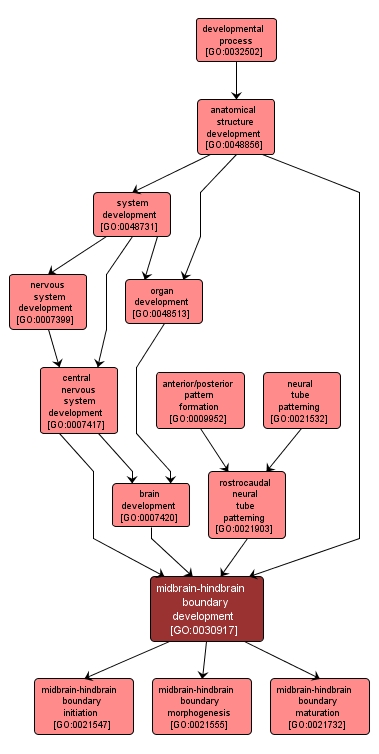| Desc: |
The process whose specific outcome is the progression of the midbrain-hindbrain boundary over time, from its formation to the mature structure. The midbrain-hindbrain domain of the embryonic brain is comprised of the mesencephalic vesicle and the first rhombencephalic vesicle at early somitogenesis stages. |














